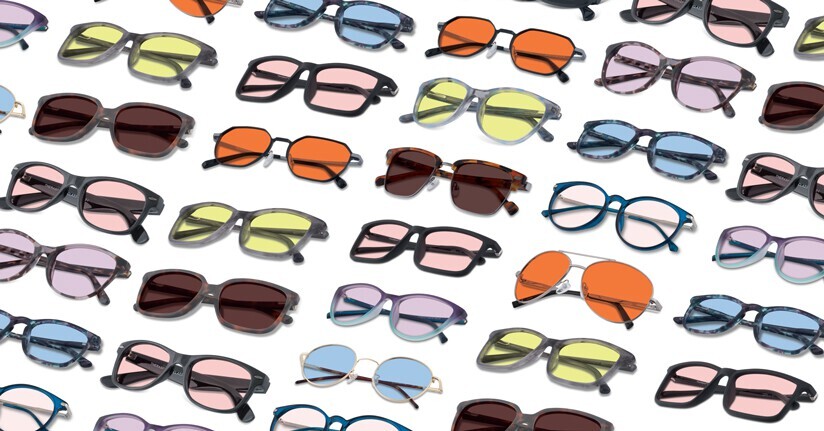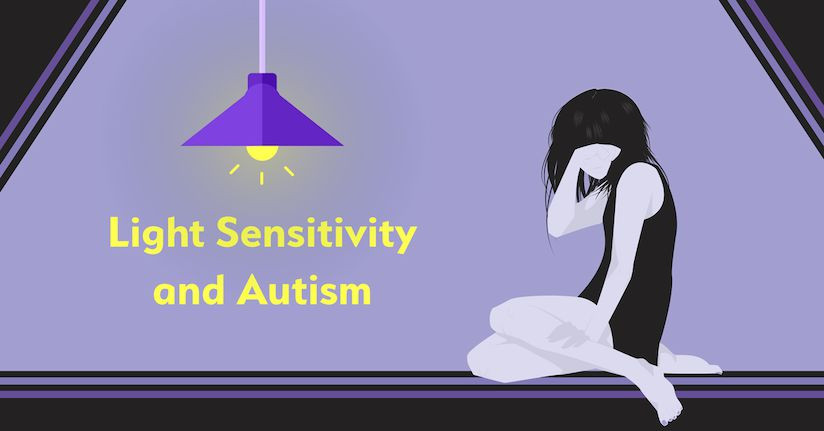Light Sensitivity and Autism Spectrum Disorder
It is widely understood that those on the autism spectrum typically experience abnormalities in sensory integration and how they process visual experiences. How visual stimuli is experienced in an autistic individual may vary greatly from a person without autism and lead to uncomfortable symptoms including light sensitivity. We take a comprehensive look at the research and recommendations for sensitivity to light that stems from autism spectrum disorder.
How Light Sensitivity Affects Those with Autism
With as many as 90-95% of people with autism spectrum disorder having external sensitivities, it is not surprising that exposure to bright light can affect their symptoms. Studies have shown that it may not be as prominent as other sensory problems—notably hearing and touch—but one small study has pegged that more than half of autistic adolescents have visual processing deficits, including sensitivity to light.2 Other analyses have noted that hypersensitivity to light and photophobia increases with autistic traits as well.3
Why Light Negatively Impacts Autism
With so little direct research on light sensitivity and autism, experts have had a difficult time explaining exactly what causes painful responses to light reported by many with the disorder. However, some hypotheses have emerged.
Researchers have linked autistic individuals with abnormal pupillary light reflex, which refers to how the pupil reacts and adapts to the brightness of various light sources. Photosensitive retinal ganglion cells—which have been implicated in migraine-related light sensitivity—are central in this process, thus suggesting that impairment may similarly affect how autistic persons perceive light.3
Interestingly, those with autism have also been found to have physical differences in the structures of their central nervous systems. Furthermore, there is evidence that they also have a lower neurological threshold for environmental stimuli, including light. These physical changes contribute to the many visual and behavioral changes experienced by those on the autism spectrum.1,3
Another explanation deals with an overload of the senses. Bright lighting added to an already visually-disorienting environment may provoke strong or painful responses to light. This is further compounded by the intensity of the light, the specific wavelengths and any harsh glare. As a result, the brain becomes confused, hindering one's ability to process light stimuli.4 Other findings similarly suggest that is not light which is the direct trigger, but instead an added complication that is enhanced by other environmental and emotional stressors.2
Fluorescent Lighting and Autism
Certain types of lighting, specifically fluorescent lighting, has been shown to have a particularly negative affect on individuals with autism. Approximately half of autistic individuals experience what is classified as a severe sensitivity to fluorescent lighting. In fact, one small study found that the use of fluorescent lighting increased the repetitive behaviors of children with autism, which may be attributed to a hypersensitivity to fluorescent light flicker.1,7 Another small study reported similar results noting that fluorescent lighting increased the frequency of stereotypical repetitive behaviors in autistic children.8
Signs and Symptoms of Autism Light Sensitivity
Sensitivity to light can manifest in different ways for people with autism. For instance, physical symptoms may include:3
- Lower tolerance for light
- Discomfort from fluorescents and other artificial light
- Light avoidance behaviors (e.g. shielding eyes)
- Afterimages
- Visual snow
- Headaches or migraines triggered by light5,6
Other signs may include repetitive behaviors (stereotypical of autism) as well as poor eye contact or eye movement. Increased anxiety is also reported autism-related sensory deficits; this is reinforced by broader clinical studies showing that light exposure can be a prominent source of anxiety in sensitive individuals—you can read more about this connection here. What is worse is that these types of sensory disruptions can lead to social problems and worsening educational outcomes, at least for school-aged autistics.2
How to Reduce Light Sensitivity from Autism
Broad recommendations for reducing light sensitivity may include things like:
- Minimizing exposure to fluorescent lighting and replacing it with indirect natural or incandescent lighting
- Maintaining rooms with dim lights
- Wearing a hat with a visor when fluorescent lights cannot be avoided
- Reducing other visual clutter and environmental stressors
Many people are turning to precision-tinted glasses like TheraSpecs, which offers a range of lens options for people wanting better light management for sensory overload and related sensitivities. In addition, TheraSpecs help reduce the sensitivity to fluorescent lighting by filtering out the most irritating wavelengths as well as the invisible pulsing that is part of its core functioning.
Speaking with your healthcare provider or child’s pediatrician about how to decrease light sensitivity in someone with autism is important. Just as each person may have a different visual experience or trigger for light sensitivity, different options may be recommended.
References:
1Coulter RA. Understanding the visual symptoms of individuals with autism spectrum disorder (ASD). Optom Vis Dev 2009;40(3):164- 175.
2Howe FEJ, Stagg SD. How Sensory Experiences Affect Adolescents with an Autistic Spectrum Condition within the Classroom. Journal of Autism and Developmental Disorders. 2016;46:1656-1668. doi:10.1007/s10803-015-2693-1.
3Sperandio I, Unwin KL, Landry O, Chouinard PA. Size Constancy is Preserved but Afterimages are Prolonged in Typical Individuals with Higher Degrees of Self-Reported Autistic Traits. Journal of Autism and Developmental Disorders. 2017;47(2):447-459. doi:10.1007/s10803-016-2971-6.
4Light Sensitivity and Autism, ADHD, SPD and Developmental Delays. https://epidemicanswers.org/light-sensitivity-and-autism-adhd-spd-developmental-delays/
5Victorio M. EHMTI-0290. Headaches in patients with autism spectrum disorder. The Journal of Headache and Pain. 2014;15(Suppl 1):B37. doi:10.1186/1129-2377-15-S1-B37.
6Sullivan JC, Miller LJ, Nielsen DM, Schoen SA. The presence of migraines and its association with sensory hyperreactivity and anxiety symptomatology in children with autism spectrum disorder. Autism. 2014 Aug;18(6):743-7. doi: 10.1177/1362361313489377. Epub 2013 Sep 26.
7Colman RS, Frankel F, Ritvo E, Freeman BJ. The effects of fluorescent and incandescent illumination upon repetitive behaviors in autistic children. J Autism Child Schizophr. 1976 Jun;6(2):157-62.
8Fenton, D.M. and Penney, R. The Effects of Fluorescent and Incandescent Lighting on the Repetitive Behaviours of Autistic and Intellectually Handicapped Children. Australia and New Zealand Journal of Developmental Disabilities 11(3):137-141, July 2009.

TheraSpecs® Glasses for Light Sensitivity
Find the glasses that fit your needs and lifestyle, and stay protected from screens, fluorescents, unwanted blue light, sunlight, flashing lights, and more.
Shop Now



